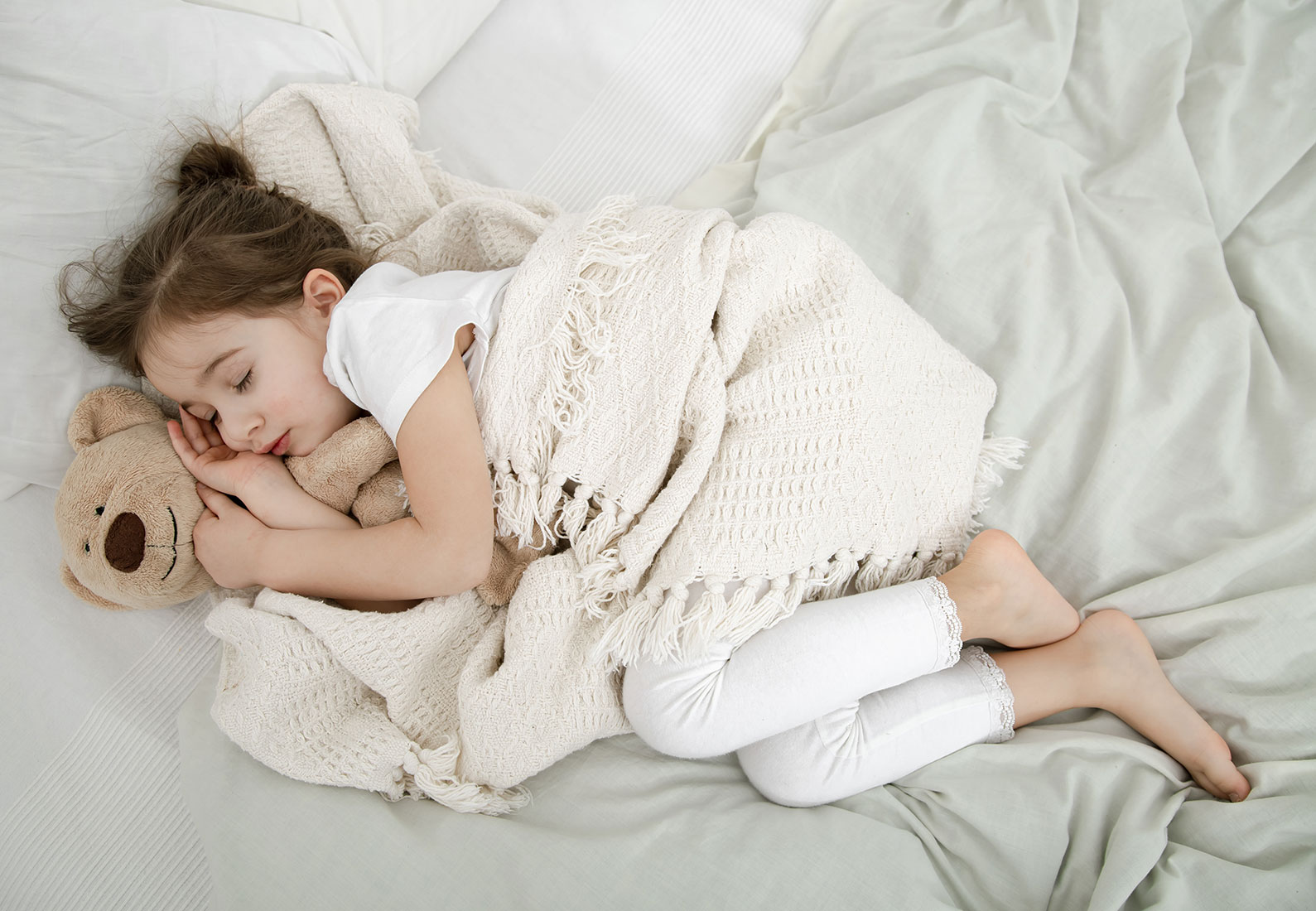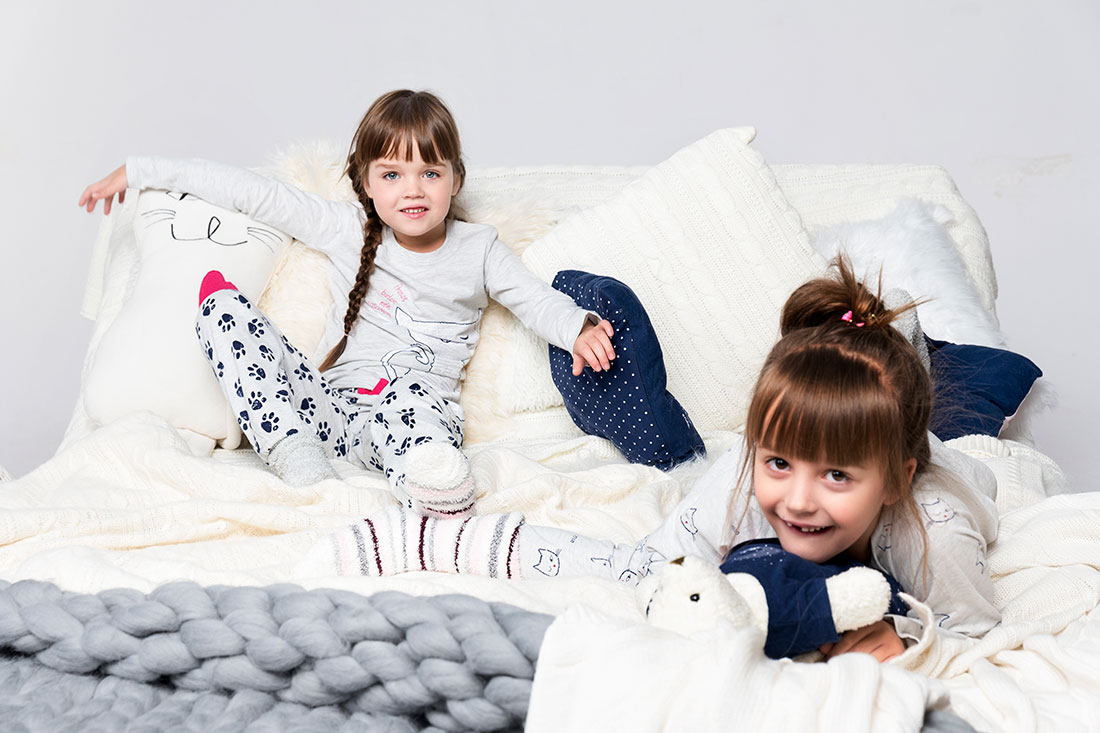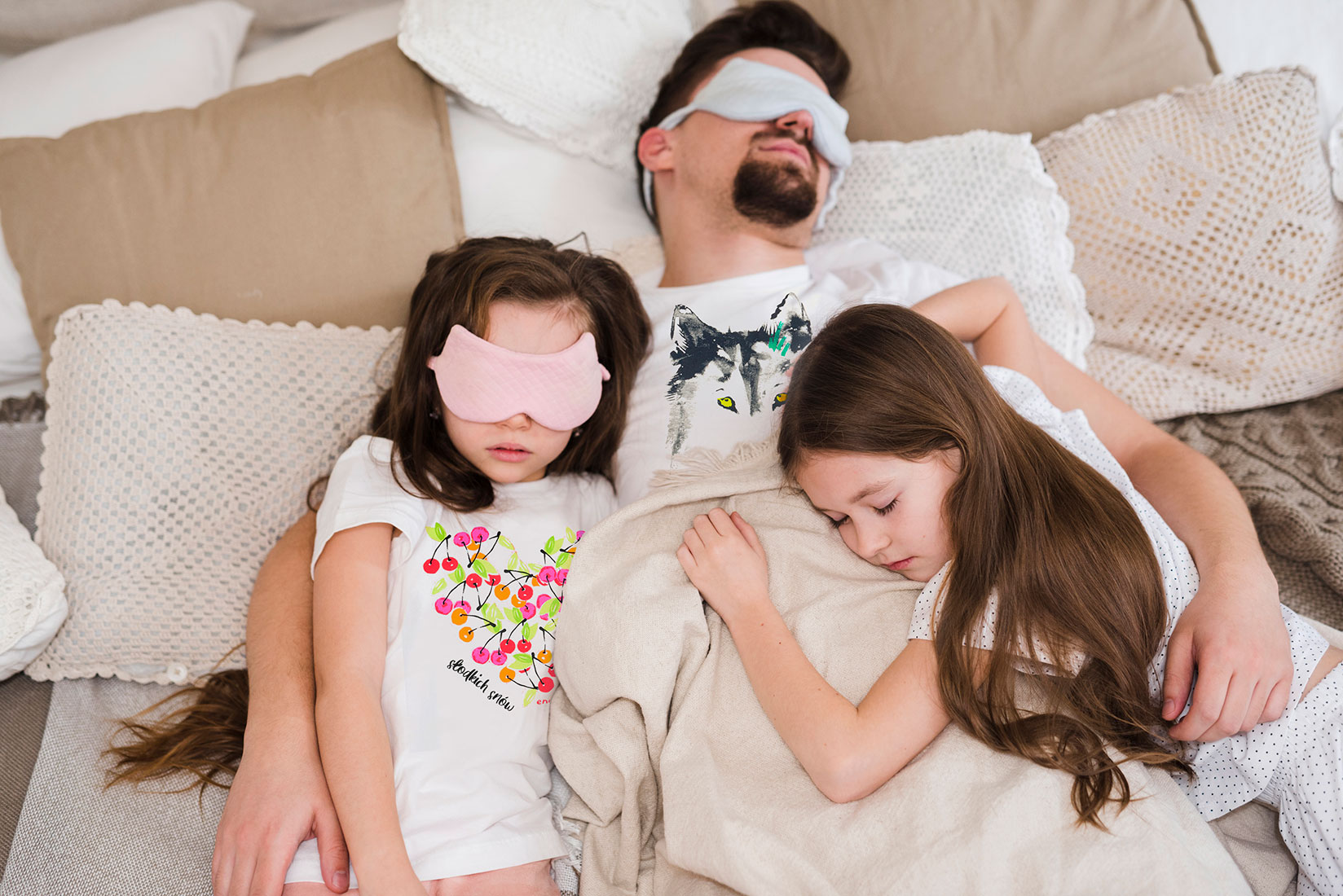
Excessive light, electronic devices, excessive heat, and various visual and auditory distractions are just some of the many factors that can make it difficult to fall asleep, reduce sleep quality, or increase the number of awakenings during the night. It's important to properly prepare a space that will put us in a blissful, sleepy mood. How can you create a comfortable sleeping environment? What rules and evening rituals should you implement to ensure healthy sleep, and how can you help your child fall asleep more easily? Discover our tips.
Evening routine and consistent sleep hours
Children have different habits and like consistent patterns in their daily routine. It's a good idea to establish a consistent bedtime routine every day. A consistent routine creates a sense of security and comfort, and children know it's time to prepare for bed. Bedtime should be preceded by several calming activities. In addition to strictly hygienic activities like bathing and brushing teeth, these can include time for storytelling, reading books, listening to audiobooks, or other quiet play, such as drawing or coloring. It's also important to maintain a consistent bedtime , which organizes the daily rhythm of the day and the entire week. Importantly, it's best to maintain the same bedtime on school days and weekends to help children maintain their routine.
Putting Your Baby to Sleep – Blackout is Essential
Adequate bedroom darkening is essential for melatonin production. This hormone regulates our natural biological clock. It's responsible for the rhythm of activity during the day, meaning the right balance between sleep and wakefulness. Therefore, limited lighting helps our brain transition into wakefulness mode. It's best to start dimming bedrooms as bedtime approaches (i.e., the last half-hour to one hour before bed), which will increase sleep hormone production. At night, it's best to keep the room as dark as possible to avoid disturbing our sleep. Blackout blinds will help with this, as they will block out all external stimuli. You should also eliminate all electronic devices with LEDs. If your child is afraid of the dark, a small night lamp can be a good solution. A child's sense of comfort and safety is paramount and will definitely make it easier to fall asleep. However, it's best to keep the lamp's light as dim as possible and with a warm color. Of course, complete darkness at night is beneficial for healthy sleep, so it's best to have a motion sensor and turn it off after a certain time.
Stop the screens
The ubiquity of screens is a plague of our times. All devices with monitors emit blue light, which has a stimulating effect and inhibits melatonin secretion. Furthermore, time spent in front of a screen strongly stimulates children's brains. After a session in front of a screen, a child's nervous system often overworks and becomes overloaded, making it difficult to calm down and prepare for sleep. Therefore, the use of electronic devices should be stopped at least an hour before bedtime . It's also good practice to remove them from a child's bedroom. Anything associated with excessive emotions, adrenaline rushes, or stress can cause difficulty falling asleep. Therefore, it's best to avoid highly stimulating or violent content before bed. This is another argument for limiting movies, video games, and television programs in the evenings.
The right temperature in the bedroom
Our bodies prefer to stay cool during sleep, and a stuffy bedroom can disrupt restful sleep. The optimal bedroom temperature should be between 16-19 degrees Celsius . Higher temperatures can make it harder for a child to fall asleep and lead to less restful sleep. Therefore, it's important to remember to air the bedroom regularly before bedtime. It's also a good idea to provide your child with comfortable pajamas and airy, breathable, high-quality bedding , which will ensure adequate ventilation and body temperature during sleep.

Time for bed - Reduce noise
Even a slight disturbance in sound levels can affect sleep quality, even if the sleeper isn't ultimately awakened. Noise can be a significant obstacle to falling asleep and can easily distract. Therefore, when putting your child to bed, it's a good idea to minimize any sounds coming from the rest of the house, such as a TV. A solution that can drown out any unpredictable noises and stabilize the sound level for your child is to turn on soothing, relaxing music, a fan, or a device that emits white noise or a heartbeat. However, it's important to remember that these are supplementary, temporary solutions, and care should be taken not to overuse them. Such devices shouldn't be left on all night and shouldn't be placed directly next to the child's head. It's helpful if they have a special sensor that activates a soothing sound when the child cries and then turns itself off after a certain period of time. Read more about the Felcia humming rabbit.A daily dose of exercise for healthy sleep for your child
If your child has trouble falling asleep and is still restless in the evening, consider whether they've had enough exercise and physical activity that day. It's common knowledge that regular physical activity is essential for our health and mental and physical well-being. Oxygenation during sports or play also positively impacts sleep quality. Children need at least one hour of exercise a day. It's best if it's combined with outdoor activity. Experts recommend that children spend at least one hour a day outdoors. However, it's best to avoid vigorous activity and overstimulation right before bed. An overly stimulated or unstable nervous system is more difficult to achieve the state of calm and balance necessary before bedtime.


Podziel się:
Posture defects in children - how to recognize them and what should worry parents?
Posture defects in children - how to recognize them and what should worry parents?